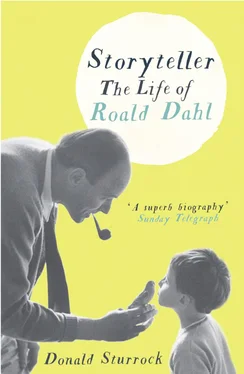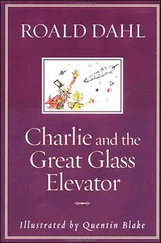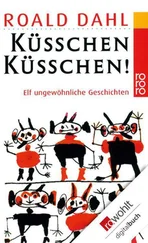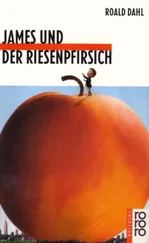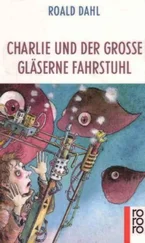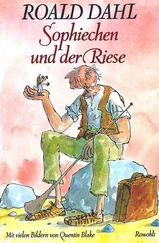1 ...8 9 10 12 13 14 ...18 Now Sofie was pregnant again. Everything seemed idyllic. But these halcyon days were not to last. At the beginning of February, Astri, Sofie’s eldest daughter, awoke in the middle of the night with a fierce stomachache. Her younger sister, Alfhild, who shared a room with her, went to fetch her mother, complaining that Astri’s cries of pain were keeping her awake. A doctor was summoned and Astri was diagnosed with acute appendicitis. The doctor operated at home, on the scrubbed nursery table, but by then it was too late. The appendix had burst and Astri had peritonitis. She never came round from the anaesthetic. About a week later, she died from the infection. She was seven years old.
Harald never recovered from the blow. “Astri was far and away my father’s favourite,” Roald wrote in Boy. “He adored her beyond measure, and her sudden death left him literally speechless for days afterwards. He was so overwhelmed with grief that when he himself went down with pneumonia a month or so afterward, he did not much care whether he lived or died.” 24Writing those words, Roald knew only too well what his own father was feeling, for with vicious symmetry, some forty years later, he too was to lose his own eldest daughter — also aged seven. The son’s understanding of his father’s psychology was acute, but he also recalled his father’s anguish from a child’s perspective. He remembered the laurel bushes, which his father had been pruning when he first became ill and which, for the rest of his life, would always be associated with death. And he remembered his father’s refusal to do battle with the disease. The eyes of the adult and child blended together as he described Harald’s death, more than sixty years after it happened. “My father refused to fight,” he wrote. “He was thinking, I am quite sure, of his beloved daughter, and he was wanting to join her in heaven. So he died. He was fifty-seven years old.” 25
Wracked with pneumonia, Harald articulated his regrets in his journal, torturing himself for having worked too hard and not having sufficiently enjoyed his dead daughter’s brief life. “How little we understand about putting a price on the world’s many good things? How seldom does the door to our hearts stand wide open? We put the blame on the fact that we have too much to do, that we must have peace and quiet to think and work, and so we shut out the sun. Only when it is too late do we see what we have missed.” 26Ironically, even as he noted these observations, he was unable to change his habits. As the coughing worsened and the fever soared, and as his eldest son Louis cycled around the garden with his five-year-old half sister Alfhild squealing with delight atop the handlebars, 27Harald made minute and fussy adjustments to his will. Attended by two nurses, he cut out a small bequest to a distant cousin and instructed that all death duties arising from any of his other legacies were to be paid by the beneficiaries. Two days later, he was dead. He was buried in the medieval churchyard of St John the Baptist, Radyr, next to his daughter, Astri, on whose grave the earth was still fresh.
Above their joint resting place, not far from a 1,000-year-old yew tree, Sofie Magdalene erected an elaborate pink granite cross. It stands still in the little churchyard that was once surrounded by fields and farmland and is now besieged by an ugly 1970s housing estate. The monument thrusts prominently above the surrounding gravestones, its Celtic ornamentation and circled cross suggesting perhaps a public commitment the Dahl family had made to the Welsh soil in which they had put down their roots. If that was the case, Sofie Magdalene was hedging her bets as well. For she also ensured that both coffins were lined in lead so that they could be dug up and transported back to Norway if she chose to return there in the future. 28
The funeral was grand and formal. All the children dressed up. Alfhild wore a specially made check dress, with black bows. She remembered the huge house filled with flowers, the servants all dressed in black, and the heady perfume of the early spring narcissi, which lay strewn in piles upon the coffin. She also remembered the stoicism of her mother. For Sofie Magdalene never showed her pain. Others wept, but she did not. Much rested on her shoulders. She was thirty-five years old and had five children in her care — Ellen (sixteen), Louis (thirteen), Alfhild (five), Roald (three), and Else, barely one. A sixth was on the way. She was already looking forward. She intended to concentrate her energies on the living rather than the dead.
* The church was dismantled, removed from its original site at Bute West Dock in 1987, and rebuilt in the regenerated Cardiff Bay in 1992. Roald Dahl was the first president of the Norwegian Church Preservation Society that supervised the restoration. In the process the building lost its corrugated iron roof and acquired a grander tiled one. It now overlooks Roald Dahl Plass (Plass is Norwegian for “Plaza”), formerly the Oval Basin, which was renamed after the author in 2002.
† The exact links between the Dahls and the Aadnesens are complex and hard to discern. Census records reveal that Harald’s sister Clara Dahl married an Aadnesen and went to live with him in South Africa, where she gave birth to a son, Harald Dahl Aadnesen, in Durban in 1895. Either Aadnesen died or the couple were divorced, for by 1900, Clara was back in Oslo, living with her father and her five-year-old son. By the time Olaus died in 1923, Clara had remarried a local machinist called Siegfried Cammermeyer. Oscar Dahl took a benevolent interest in his nephew, Harald, who spent much time with his own son, Erik. Oscar’s family photograph albums show the two boys playing with each other, skiing in thick snow, and there are several shots of Harald’s wedding in France. What happened after that is unclear. Either Harald died young or his connection with Ludvig Aadnesen became increasingly tenuous. When Ludvig died in Whitchurch, Glamorganshire, in 1956, at the ripe old age of ninety, he left the bulk of his estate to his nieces Helga and Elizabeth and a nephew called Torolf. There was no mention at all of the South African-born Harald.
‡ According to Bryony Dahl, most of Marie’s furniture eventually went to her daughter Ellen, who used it to furnish the house in Hampstead, where she lived with her husband Ashley Miles. When Ashley and Ellen died, within a few weeks of each other early in 1988, everything was left to Ashley’s secretary, Barbara Prideaux, who had by then become their carer. She too died shortly afterwards, leaving two Beaurin-Gressier portraits to Bryony. She subsequently sold these along with the two pieces of Marie’s furniture that had been left to her father, Louis: an “elaborate marquetry cabinet” and a “ridiculous marble and ormolu clock” — presumably the Louis XVI timepiece mentioned in the marriage settlement — Bryony Dahl, Conversation with the author, 01/17/08.
§ Alfhild was named after Sofie Magdalene’s late brother, Alf, who had died in his twenties. Astri Newman [daughter of Alfhild], Conversation with the author, 10/15/07.
¶ Learning two languages at the same time may have been one of the reasons Roald was so slow to start speaking. According to family legend, his first words were a complete sentence, spoken in Norwegian: “Pappa, hvor for har du ikke t0fflene dine pd deg — Daddy, why aren’t you wearingyour slippers?”
CHAPTER THREE 
Boy
THE EDWARDIAN CHILDREN’S WRITER Edith Nesbit thought that the most important quality in a good children’s writer was an ability vividly to recall their own childhood. Being able to relate to children as an adult, she believed, was largely unimportant. Roald Dahl could do both. His seductive voice, the subversive twinkle in his eye, and his sense of the comic and curious gave him an ability to mesmerize almost every child who crossed his path — yet he could also remember and reimagine his own childhood with astonishing sharpness. The detail might sometimes be unreliable, but what never failed him was an ability instinctively to recreate and understand the child’s point of view. It was something of which he was very proud. He knew he could do it and that a great many others could not. Sitting in his high-backed faded green armchair by the fire at Gipsy House, a glass of whisky in one hand, he once talked to me about it with considerable pride. “It’s really quite easy,” he would say. “I go down to my little hut, where it’s tight and dark and warm, and within minutes I can go back to being six or seven or eight again.” Or, as his alter ego, Willy Wonka, put it in an early draft of Charlie and the Chocolate Factory: “In my factory I make things to please children. I don’t care about adults.” 1
Читать дальше
